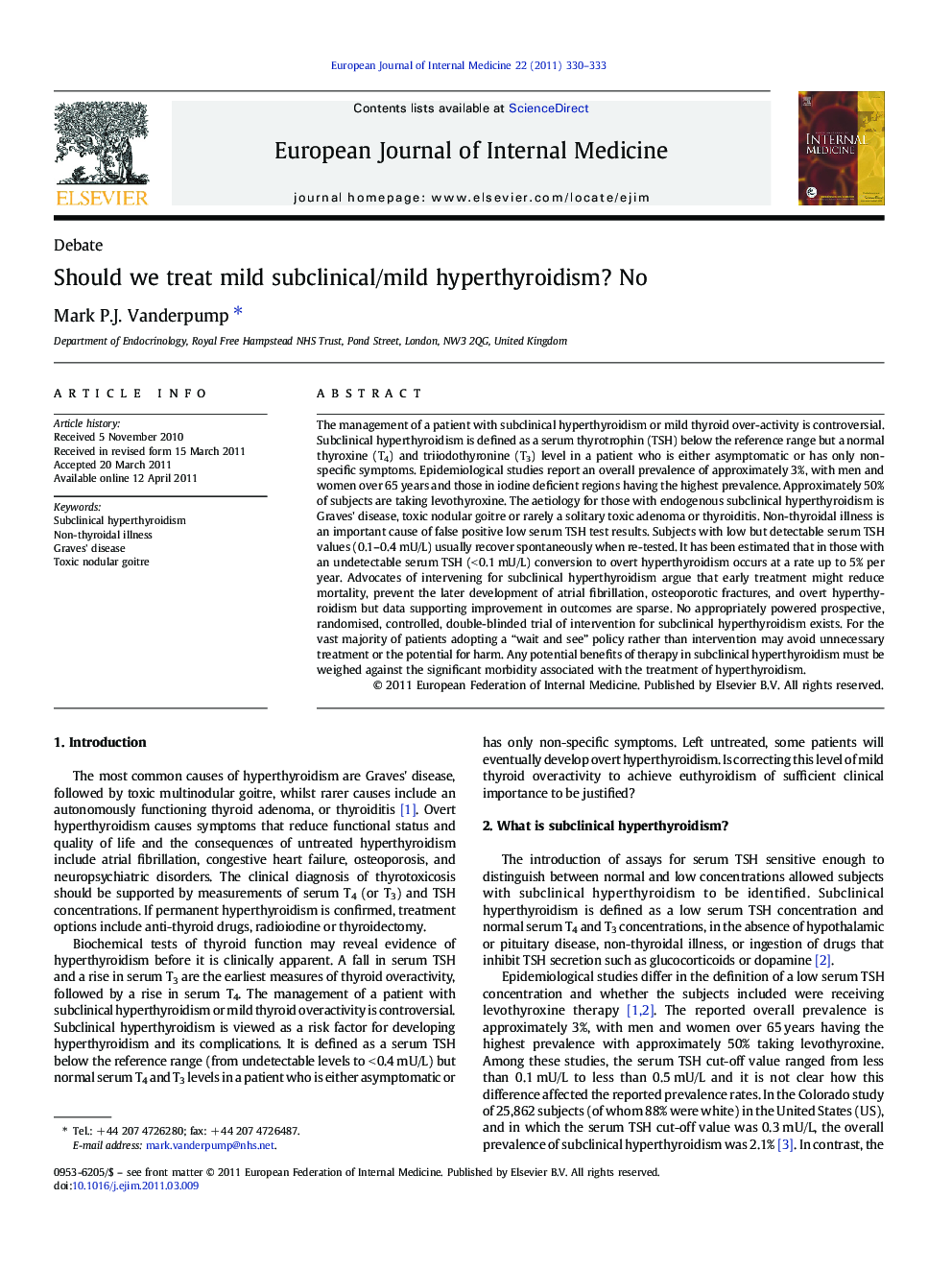| Article ID | Journal | Published Year | Pages | File Type |
|---|---|---|---|---|
| 3467456 | European Journal of Internal Medicine | 2011 | 4 Pages |
The management of a patient with subclinical hyperthyroidism or mild thyroid over-activity is controversial. Subclinical hyperthyroidism is defined as a serum thyrotrophin (TSH) below the reference range but a normal thyroxine (T4) and triiodothyronine (T3) level in a patient who is either asymptomatic or has only non-specific symptoms. Epidemiological studies report an overall prevalence of approximately 3%, with men and women over 65 years and those in iodine deficient regions having the highest prevalence. Approximately 50% of subjects are taking levothyroxine. The aetiology for those with endogenous subclinical hyperthyroidism is Graves' disease, toxic nodular goitre or rarely a solitary toxic adenoma or thyroiditis. Non-thyroidal illness is an important cause of false positive low serum TSH test results. Subjects with low but detectable serum TSH values (0.1–0.4 mU/L) usually recover spontaneously when re-tested. It has been estimated that in those with an undetectable serum TSH (< 0.1 mU/L) conversion to overt hyperthyroidism occurs at a rate up to 5% per year. Advocates of intervening for subclinical hyperthyroidism argue that early treatment might reduce mortality, prevent the later development of atrial fibrillation, osteoporotic fractures, and overt hyperthyroidism but data supporting improvement in outcomes are sparse. No appropriately powered prospective, randomised, controlled, double-blinded trial of intervention for subclinical hyperthyroidism exists. For the vast majority of patients adopting a “wait and see” policy rather than intervention may avoid unnecessary treatment or the potential for harm. Any potential benefits of therapy in subclinical hyperthyroidism must be weighed against the significant morbidity associated with the treatment of hyperthyroidism.
